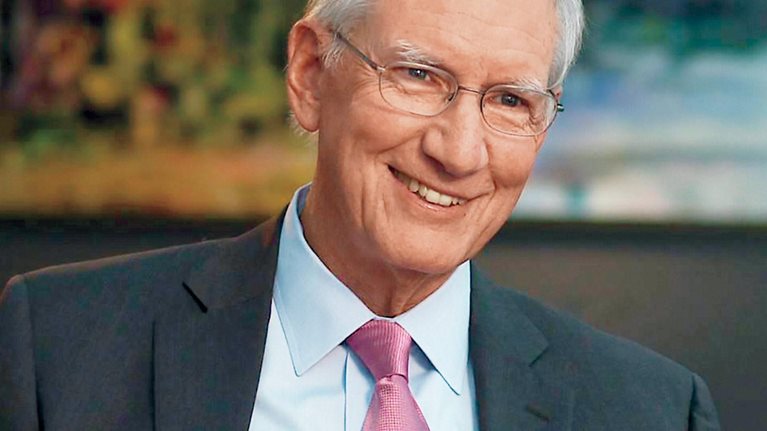What challenges are unique to leading an iconic company deep into its second century? In this interview with McKinsey’s Rik Kirkland, Heineken NV executive board chairman and CEO Jean-François van Boxmeer discusses leadership against a backdrop of corporate tradition and changing consumer and societal demands. Since joining Heineken in 1984, van Boxmeer has worked extensively in Africa and Europe, and has held his current roles since 2005. An edited transcript of his remarks follows.
Becoming a leader
Your upbringing plays a very big part in what kind of leader you’re going to be. Then when you start your professional life, the years between 25 and 35, those are the years where you are the most prone to change, to learn. You behave more like a sponge.
And in my case, that happened in Africa. I was sent by Heineken, a little bit by accident, to Africa. I was speaking French, and there weren’t that many French-speaking guys around in Heineken, so I was sent to countries like Cameroon and Rwanda, and the former Zaire, which is now the Democratic Republic of Congo.
I spent ten years of my life there. Those were very exciting years where, beyond leading a commercial organization, you also had to deal with a lot of societal problems, emergency problems, all kinds of things you were unprepared for. They were extraordinary people with an extraordinary energy in very adverse conditions, and that has shaped me.
I think my experience in Africa brought very early to me the understanding of the relativity of the power positions that you are dealt when you are in a leadership position in a company. Because never forget that you can be a CEO of a company like I am today, but it is a rented position. It’s only temporary. So never forget when you climb up the stairs to tip your hat to those who climb down the stairs. One day you will do the same. So I thought it was worth three times Harvard.
Learning from acquisitions
When we acquire a company, there are always two sides to it. You have the processes that you discover in an acquired company, and you have the people. And from time to time, you see that processes in an acquired company are interesting and could be adapted for the worldwide Heineken Group. In 2010, we took over a huge Mexican brewery, Cuahautémoc Moctezuma. They had very tight processes for planning, and that inspired us to really tighten up our planning processes for the whole organization. There is a lot of benefit of blending in, for example, taking people who worked in mature, hyper-competitive, sophisticated markets in, let’s say, Europe, with very specific and delineated brand portfolios, and putting them into a growing, high-growth market.
And at the same time, putting people who were used to working in high-growth markets where lines of command are very short and simple, and very much action-oriented, and putting these kind of leaders in a mature organization to speed up that organization.
Mobilizing to innovate
Innovation is the lifeblood of the company. It has taken very different and various forms. It is not only about the process we use to brew and ferment our products, how we interact with our environment, consumption of water and energy. All these processes are constantly improved. The footprint that they leave on our planet is being reduced and improved. That’s one aspect of how we innovate.
But we also innovate on the consumer end with new products. So we introduce cider to people who didn’t know cider. We introduce Belgian brands to Brazilians. We introduce Mexican brands to the rest of the world. And then there is a third leg, which is to look at whether there are new products that don’t exist today, new ways of tapping beer or selling beer that we can introduce so as to make our business better.
So innovation has many, many faces. And you have to mobilize your organization around the innovations, not only by target-setting, but also creating a culture where innovation is encouraged across the board.
Confronting societal expectations
The company should not think that it is there to issue policy lines for society. It can issue statements about its own behavior, but not prescribe policy. You have no legitimacy to do that. You are accountable in front of tax authorities in the countries where you operate for your employees, for your shareholders, your suppliers, but in the first place, to your consumers.
And what is specific to our industry is the alcohol problem. Alcohol abuse has always been existent in the world, and we have no advantage to be promoting alcohol abuse because that makes our business unsustainable. So how can you play your part to make your business more sustainable? It is to advocate responsible consumption.
The latest addition was made by a deejay in the Netherlands. Armin van Buuren has a successful international career. And in his commercial spot he makes the point of, “Dance more, drink slow.” The ad campaign says, “When you have a good dancing party, you drink less.” And I had to explain to my people that it was better to sell less and dance more, rather than trying to sell more and having unfolding situations at the party.
Managing for the long term
Sustainability boils down to a very simple fact: If I continue to do things that I do today, will I exist tomorrow? Is what I’m doing sustainable? Don’t I use too much water and energy to make my beer? Do we not use the wrong source of water supply to grow our agricultural produce, which will lead us in 20 years’ time to problems and no supply at all in the area where we are?
In balancing the short, medium, and long term, I think you have to spot the opportunities and map them. And say, “Well, what do I have to do so that the next 3 years are going to be great years? What, from 5 to 10 years? And what could be in 20 or 30 years?”
And so when we went on the acquisition trail, as we have been doing over the past ten years, some countries we acquired business in, like Nigeria, where we added to our existing business, was on a perspective of short and medium term. When we acquired our Mexican operation, it was a short and medium term. When we acquired India, it was a long view, if you will.
When we invested recently in a country like Ethiopia, it’s a long view. It’s at the very early stage of its development, but we think that Ethiopia in 20 years’ time is going to be a force to reckon with in Africa. So we invested there. So the next ten years, returns will be minute. In the first three years, we’re going to lose money in Ethiopia. But 20 years from now, Ethiopia might be as big as Nigeria is today. That is how you have to think about geographies as well as brands.
People have to embrace a product. They take it in their body, so it’s a very intimate relationship they have with food and bev. Remember, olive oil took 25 years to make it to our kitchen tables in northern Europe. And sushi, which is raw fish—I think our grandparents would have looked in total disbelief that we eat it.
The same goes with when you go out and you’re going to sell cider on the rocks to Brazilians or Mexicans. But take a look at 20 or 30 years, and then come back. That’s what you have to do also when you lead a business which is 150 years old and still planning to go another 150 years.


